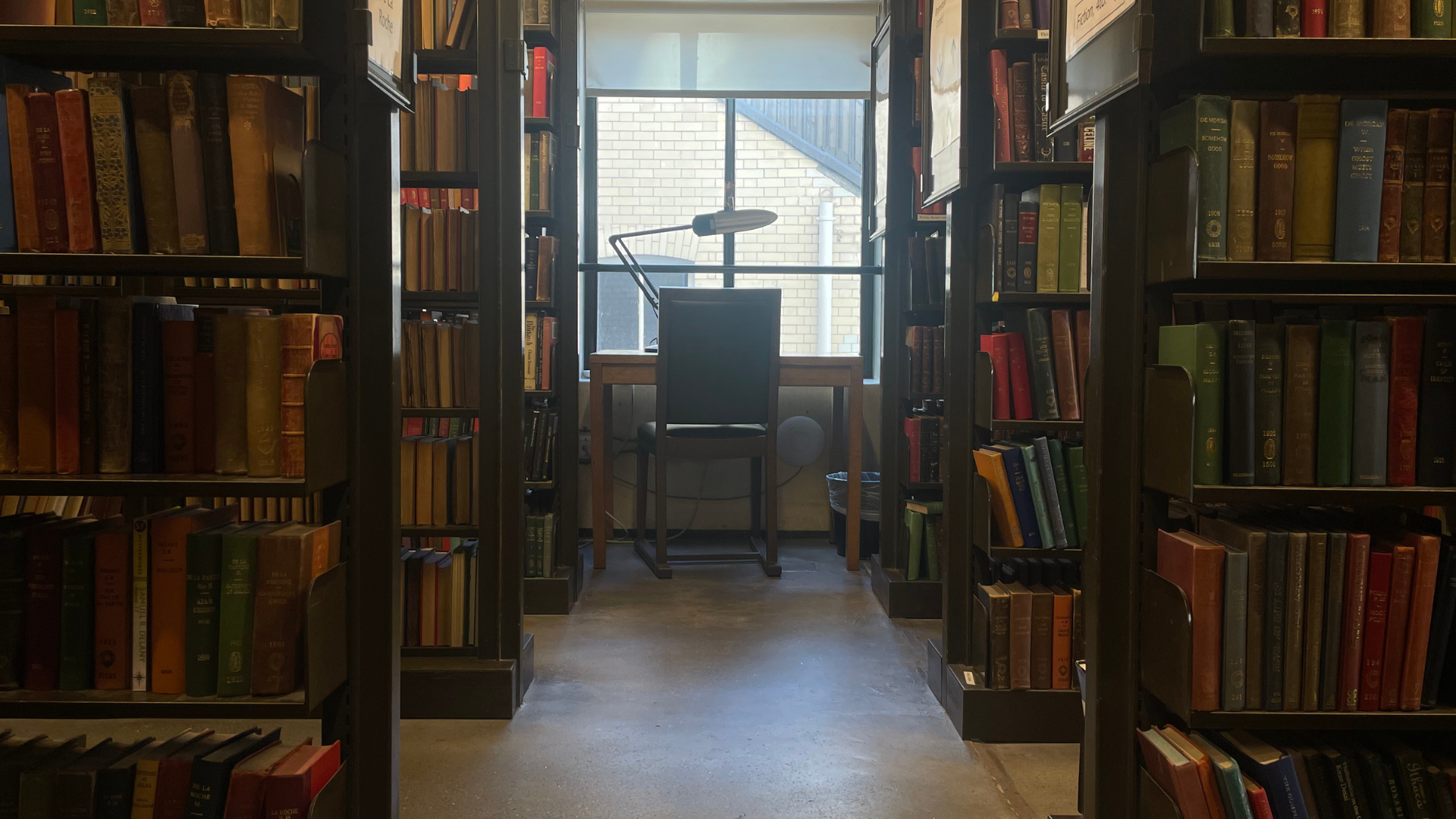In this, our latest blog instalment, we highlight the work of our Preservation and Stack Management team and their tremendous efforts to save thousands of books following a flood in the Topography stacks last year…
With well over a million books, the sight of an empty shelf in The London Library is a rare thing. Yet members and visitors browsing the1890s back stacks – home to our History, Science & Miscellaneous and Topography collections – will have noticed that at basement level, the bottom shelves have been bare for several months. Here we tell the story behind these lonely shelves and the great efforts of our Preservation and Stack Management (PSM) team to reunite them with their books.
It is often said that water, rather than fire, poses the greatest threat to books. In the early hours of 22nd August 2011, a burst pipe caused flooding at basement level in the 1890s stacks, and we witnessed the devastating damage water can cause. The PSM and Support teams’ response was immediate and their efforts fantastic, using specialist water extractor machines and good old-fashioned buckets, wellingtons and hard-graft to rescue the books from the lower shelves – the first step in a long-process to restore, rebind or replace thousands of volumes.
Staff had to work very quickly to ensure damage limitation; it takes only 72 hours for mould growth to set in. A total of 3211 books were affected, the majority of which were sent to the document restoration service Harwell Document Restoration Service to be professionally frozen and dried. (The Library lacks the space and resources to properly dry more than about 100 books at a time.) Rapid freezing of wet materials has a stabilizing effect, preventing further damage and mould growth. They are then thawed and dried, either by vacuum freeze-drying or air-drying.
It was not only the books that needed to dry: it took five months before the wooden shelves that hold the collections, and the walls, were fully dry and suitable for use.
Books are now being returned to the Library in large crates – around 30 every two weeks – keeping our PSM team very busy! Members of the team, surrounded by crates and boxes and armed with expert knowledge of book conservation, assesses the damage to each book, deciding whether it will be re-shelved in its current condition, restored in-house by our Conservation team, sent away to be re-bound, or replaced.
It has been a cross-departmental effort, with Acquisitions ordering replacements, PSM repairing and re-shelving books, arranging for rebinding, and ensuring the shelves are ready for the return of the collection.
We are currently fundraising for Phase Three of the Library’s redevelopment programme, which will see the full refurbishment of the 1890s stacks – work that is vital to the long-term survival of the collections.



















